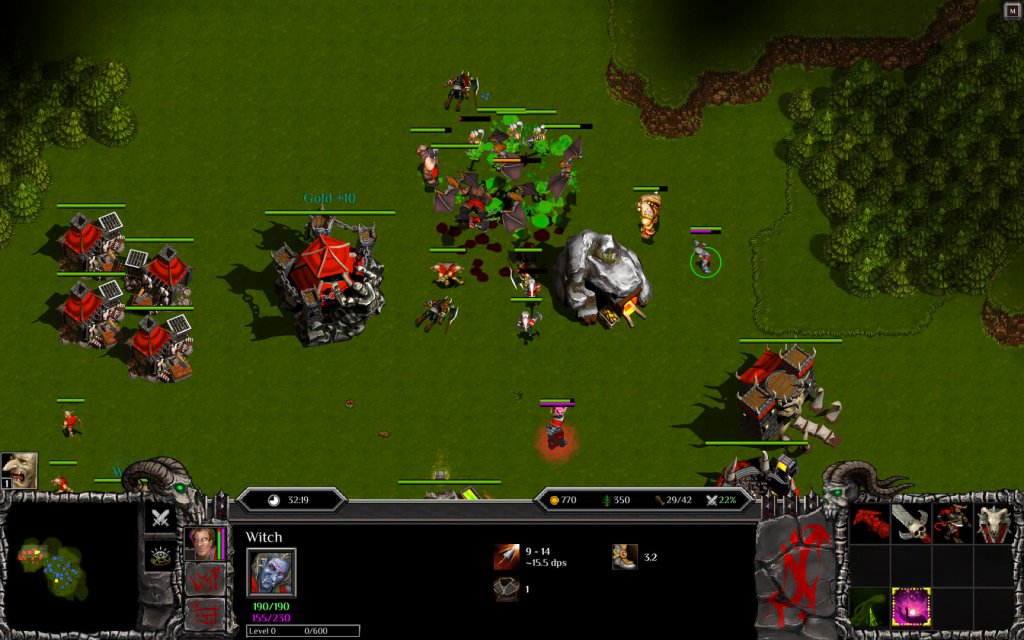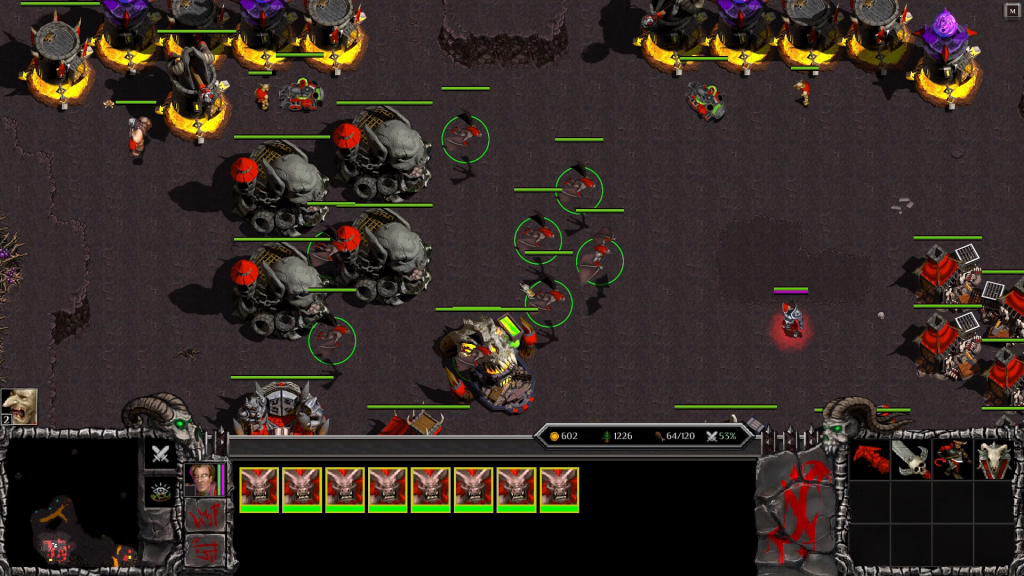Loria offers real-time strategy of old
WarCraft II: Tides of Darkness remains among the most popular real-time strategy games from the nineties. Its sequel, WarCraft III: Reign of Chaos, expanded the series’ popularity further. Loria, developed and published by Loria, takes elements from both games and brings us more traditional strategy.
Loria tells the story of Dalt, Iron Lord and leader of the forces of Order. Said forces are — to nobody’s surprise — at war with the forces of Chaos. Your job is to lead Order to victory during the first campaign. After that, you unlock the Chaos campaign. Both feature eight missions.

At the moment, Loria offers only these two campaigns, as well as a skirmish mode. The developer is considering the inclusion of online mutliplayer if enough players show interest. However, even without multiplayer, Loria well keep you busy for a while.
Like model WarCraft II, Loria has two factions with a similar roster of units. Order fields swordsmen, rangers and knights, whereas Chaos relies on lancers, huntresses and brutes. High-end units also have counterparts; Order trains mages and builds gunships while Chaos has necromancers and manticores.
As similar as the two factions are, no two units are identical. Knights are faster than brutes, but brutes are tougher. Gargoyles tear other air units apart with their claws and their benign cousins, the hippogriffs, can be mounted by rangers to gain a ranged attack. However, the two factions do not require you to master completely different playstyles.

Order and Chaos structures do not share names or looks, but are comparable for the most part and hold few surprises. Their selection consists of production facilities, defence towers, tech buildings and their headquarters. The latter produces workers and can be upgraded twice to gain access to the higher tier of the tech tree — once more, a mechanic inspired by the WarCraft series.
Likewise lifted from WarCraft is Loria’s economy, which consists of gold mines to mine and forests to deforest. At this point, we should mention that Loria does not try to hide any of this; the developer explicitly stated where Loria’s inspiration comes from. Even Loria’s charming 2D art style is highly reminiscent of WarCraft II.
WarCraft III, on the other hand, provided the model for the hero units. Each side has three — a melee fighter, a ranged hero and a support caster. Heroes can level up; gain new active and passive abilities; and have a rucksack than can be filled with both consumables and items that raise their various statistics.

Likewise courtesy of WarCraft III and other more recent RTS games are a number of quality-of-life features. Workers have an auto-repair toggle. You can order Spellcasters to cast certain spells automatically. All units regenerate and save you the frustration of staring at a bunch of half-dead units that you know will not last a second in the next raid. Unit groups are limited to twenty-four creatures, but that is generally sufficient.
As similar to WarCraft II as Loria is, it is distinct enough to not feel like an outright clone. Its world feels a bit more fantastic, especially with the colourful units of the Chaos faction. That said, the game does not provide a whole lot of background information, which isn’t detrimental to the story, but lore entries on the creatures and some more information on the world itself would have been neat.

Loria’s story is laid out in an introductory cutscene. After that, mission briefings and dialogue at the start of each mission advance the plot. The overarching theme, Order versus Chaos, is as old as fantasy storytelling, but Loria offers a twist or two that you may not see coming. Though unlikely to blow your mind, the story is solid. The voice acting is decent, though the game text comes with a fair amount of questionable wording.
The campaigns themselves offer a number of different missions. Most of these provide you with a base, though some are of tactical nature and require you to manage a small team of units with little to no backup. Thanks to the fairly powerful heroes and unit regeneration, they are not too difficult. Other missions require you to take out specific units, hold out until a timer runs out, or reach a certain spot on the map.

Most of the maps in Loria are fairly extensive. They generally have a couple of neutral critters that guard treasure, with maybe a secret path and resource nodes to expand to. Some maps feel a bit vast and empty, but also offer numerous approaches to finish the mission. It is rarely necessary to eliminate all enemy bases (of which there are often three or more), but doing so could give you access to extra resources and more breathing space. Other maps gold-starve the player and force you to either expand or act decisively with the limited resources you have.
Overall, Loria offers the real-time strategy of old spiced with modern comforts for a decent single-player experience. If you do not mind the lack of multiplayer, give it a go.
Loria is now available for PC via Steam. A demo is available, too.
Comments are closed.